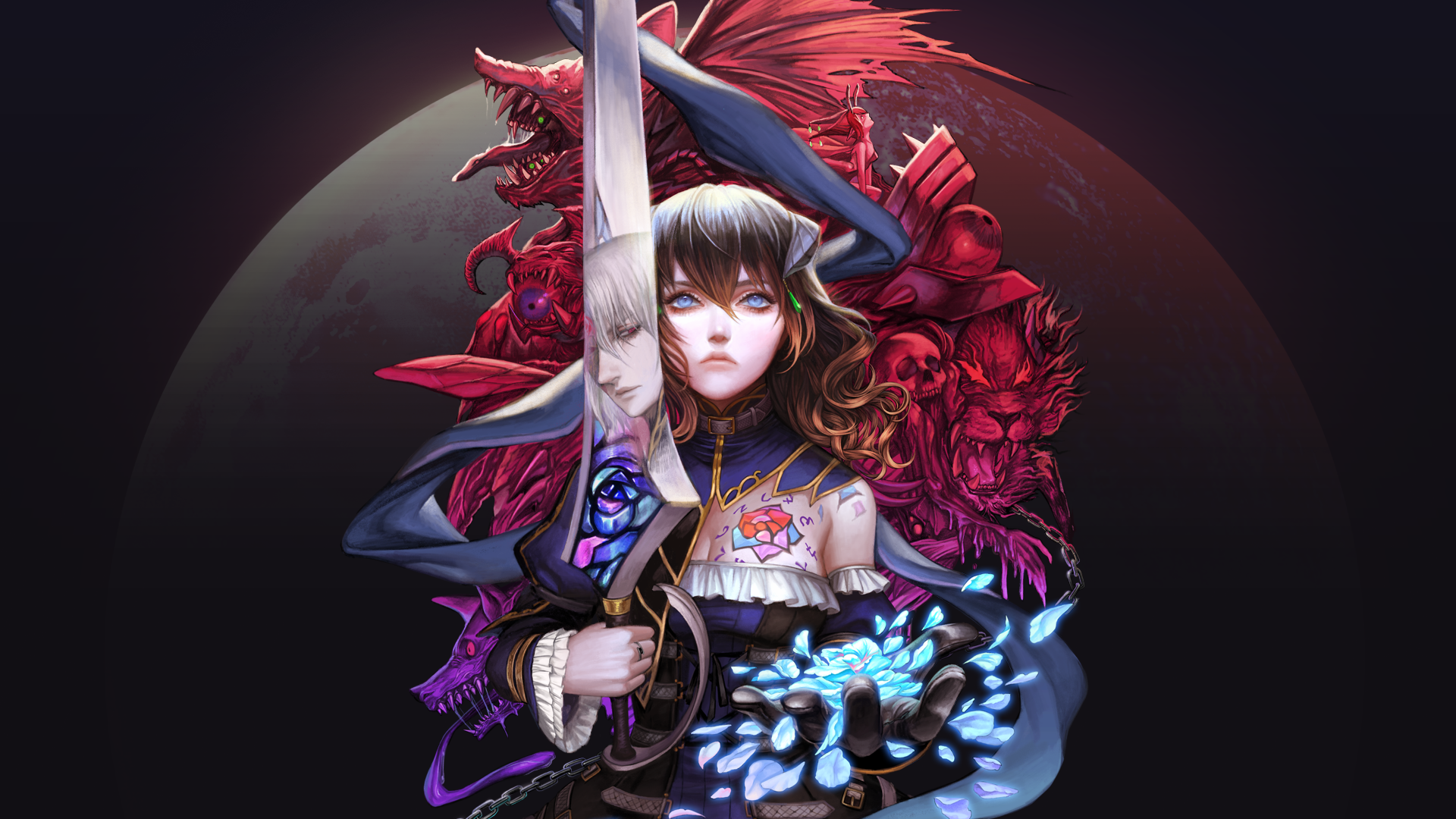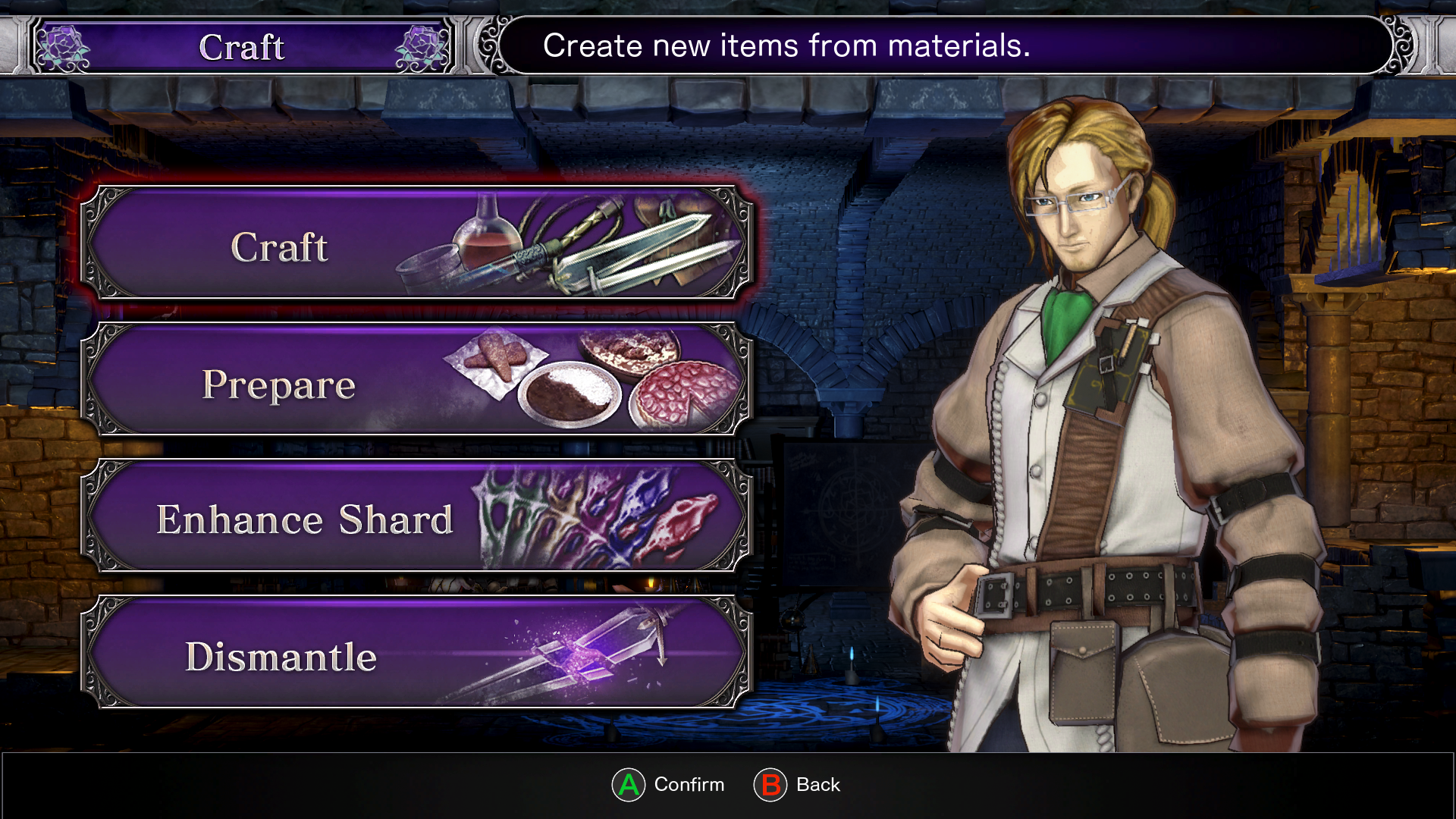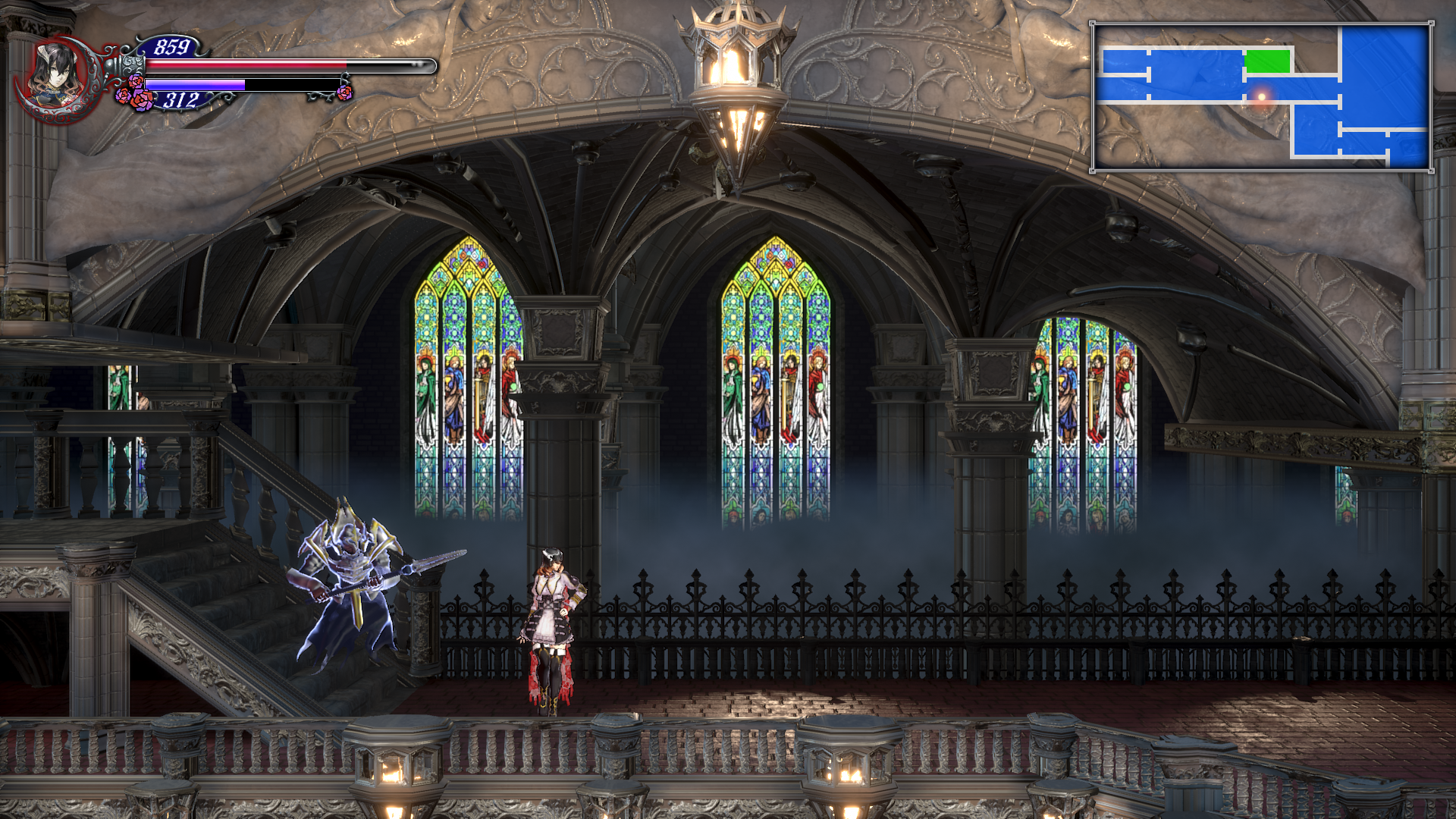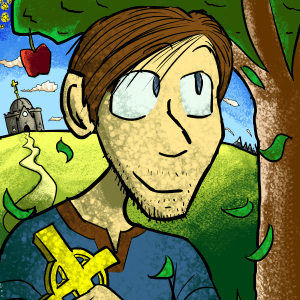
October has come and gone, but I had so much fun writing our Halloween special this year I just couldn’t resist reviewing another spooky game. Bloodstained: Ritual of the Night was created by Koji Igarashi and released in 2019 as a spiritual successor to the iconic Castlevania series, which Igarashi had been the producer of while working at Konami. Considering the game’s wildly successful crowdfunding campaign ($5.5 million dollars) and Igarashi’s reputation as the man behind the golden age of Castlevania, expectations were high to say the least. Though I might be a little late to the party, I am no less excited to see if Bloodstained: Ritual of the Night lives up to the legacy of its predecessors.
The game’s story takes place in 18th century England which has become besieged by demons after an alchemist guild performed a disastrous ritual in a desperate attempt to hold onto their waning power in the face of the industrial revolution. The player steps into the role of Miriam, a “Shardbinder” who was experimented on by alchemists as a child to harvest and control shards of demonic power, on a mission to save her friend and fellow Shardbinder, Gebel, who has become corrupted by a demon named Gremory. On the whole it’s a fairly standard video game story of good, evil, friendship, betrayal, and redemption that gets the job done. The surrounding world building however, is a bit convoluted and vaguely defined which left me wanting more. For instance there is reference to a religious organization known only as “The Church” which has been at the vanguard against the demonic invaders, but is this The Catholic Church? The Anglican Church? Well the only representative of this church seen in game is a female exorcist which doesn’t make any sense for any Christian denomination in 1793. The lack of such details aren’t going to ruin the experience, but I did find it irksome at times.
Other aspects of Bloodstained’s presentation on the other hand make a much stronger showing. The setting is a feast for the eyes with gothic-esque architecture mixed with baroque-esque ornamentation. There’s a few cut corners and low resolution textures in certain areas, but generally speaking these were a rare occurrence. The characters and monsters are well realized as well, but sometimes their animations felt a bit stiff. The music had several standout tracks with its soaring violins, heavy guitar riffs, and atmospheric organ/piano. The game’s voice cast did a fairly good job despite the fact that the game is fairly light on cutscenes, though I will say I thought David Hayter as Zangetsu sounded too similar to his performance as Solid Snake from Metal Gear which got a little distracting.
Bloodstained is an exploration focused action platformer set in a labyrinthian castle of interconnected levels filled with monsters, traps, and secrets. To overcome these obstacles the player must equip Miriam with weapons, armor, accessories, and more to survive. Weapons in particular can have a huge effect on Miriam’s combat abilities with different ranges, speeds, and fighting game-esque special moves. Additionally Miriam can increase her base stats (strength, dexterity, etc.) by consuming food and leveling up by defeating enemies in a similar fashion role-playing games. Miriam’s Shardbinder abilities also play a large part in the game’s progression. Shards can be collected by slaying demons and each one grants Miraim a different ability when equipped including enhanced movement options, long range projectiles, supportive minions, and so on and so forth.

Johannes can help Miriam acquire rare items not found in the castle so be sure to visit him on a regular basis.
The gameplay is very much a “great hits” of Castlevania, as one would expect from a game made by Koji Igarashi. If you’re familiar with games like Castlevania: Symphony of the Night or Castlevania: Aria of Sorrow you’ll feel right at home in Bloodstained: Ritual of the Night. At the same time however, the lack of anything truly original in Bloodstained’s arsenal can come off as unambitious in certain respects. To that end, I think it’s safe to say Bloodstained stands in the same league as its predecessors without necessarily surpassing them. That’s high praise coming from someone who considers Aria of Sorrow one of his favorite games of all time.
Whatever your opinion on the game is however, no one can deny that Bloodstained will give you your money’s worth. Not only is the game a complete package on its own, but over time there’s been a substantial amount of additional content that’s been added for free. These free DLCs include additional playable characters like Zangetsu, extra modes like classic mode(which turns the game in a traditional platformer akin to the very first Castlevania from 1984), and crossovers with other games such as Ubisoft Montreal’s Child of Light. Admittedly I haven’t actually completed all of this extra content as of the time of this review, but I have played enough to know that it’s just as solid as anything in the main story. Word is the game still has a few more content updates coming in the near future and I for one am very intrigued for whatever comes next.
From the Catholic perspective, Bloodstained provides a very clear moral message front and center in the game’s narrative. In the game’s backstory Miriam saw herself as a monster bound to hell as the demonic shards crystallized within her body, but Gebel saw things differently. Since the Shardbinders were the unwilling victims of the alchemists’ cruel experiments Gebel reasoned they were still human because they had done no evil of their own accord, which brought Miriam back from the brink of despair. This is Miriam’s driving motivation to save Gebel throughout the game, she knows Gebel is not the type of person to cast aside his values and willingly commit atrocities, and ultimately she is vindicated after learning of Gremory’s curse.
This emphasis on evil as a conscious choice humans make rather than some inescapable destiny is an admirable message worth promoting. Our world is full of temptations both material and immaterial, but the blame will always lie on us if we choose to cross the line and commit mortal sin. Even if we do fall, our Lord has given us the sacrament of reconciliation so that we may atone for our sins and once again strive to live a holy life. All that being said however, this moral does come with a pretty big asterisk in the context of Bloodstained.
The problem with this moral’s place in Bloodstained is that it is used to justify Miriam using the power of the demonic shards to do good. While this might make for a fun gameplay mechanic, in real life such an application would be absolutely disastrous. We’re not talking swords and guns here, which are only as dangerous as the people wielding them, these are powers drawn from the depths of hell which by their very nature will necessarily lead to suffering and eternal damnation. It’s so obvious that it doesn’t really need to be said, but don’t mess with demons for any reason. Always turn to God when the going gets tough.

Not sure why there’s a chapel in this castle, but it sure looks cool.
Bloodstained: Ritual of the Night is a game I can confidently say I enjoyed immensely. It’s not a flawless game by any means, but it accomplishes what it sets out to do nonetheless. With a tighter story and little more ambition mechanically the game’s upcoming sequel could be a serious contender for Castlevania’s throne, mostly because the latter is kinda stuck in limbo at the moment, but I digress. So if you’re looking for a good game to play next Halloween, or any time of the year for that matter, Bloodstained: Ritual of the Night comes with a hearty recommendation.
Scoring: 88%
Gameplay: 5/5
Visuals: 4/5
Sound: 5/5
Story: 3/5
Replayability: 5/5
Morality & Parental Warnings: Bloodstained: Ritual of the Night is an action platformer where the player explores a large castle and fights demons using blades, bludgeons, firearms, and magic powers. There is a fair amount of blood in the game, but there is an option to change the color of the blood. Some characters, especially the female characters, wear sexualized outfits. Almost every enemy in the game is considered a type of demon, but none of them are theologically accurate demons and mostly consist of horror movie monsters.
